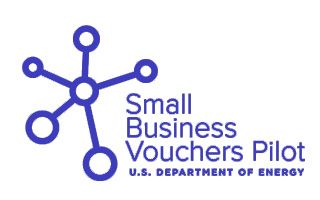5 energy companies get technology-to-market help from Sandia

DOE has announced that five more small, clean-energy businesses were chosen to work with Sandia to bring next-generation technologies to market faster.
“These are innovative companies working to build the clean-energy economy,” says Mary Monson, senior manager of Industrial Partnerships Dept. 1930. “Many of these companies have not had access to national laboratory resources. Now they do, and Sandia is happy to bring entrepreneurs together with our scientists and engineers to solve challenges and break new ground in the clean-energy marketplace.”
The Small Business Vouchers Pilot, or SBV, was launched last September and companies were encouraged to apply for technical help from DOE labs. In March 2016, 33 companies were selected to receive $6.7 million in funding through the pilot. Seven of them are working with Sandia with vouchers totaling $1.62 million.
In the Aug. 18 announcement of second-round awards, the DOE Office of Energy Efficiency and Renewable Energy (EERE) named 43 applicants that will receive $8 million in vouchers. The five that will work with Sandia are Group NIRE of Lubbock, Texas; Oscilla Power Inc. of Seattle; HelioBioSys Inc. of Woodside, California; SkySpecs of Ann Arbor, Michigan; and Nishati Inc. of McLean, Virginia. The vouchers total $983,000 and range in value from $100,000 to $300,000.
“Through SBV, Sandia is collaborating with small businesses throughout the country,” says Jackie Kerby Moore, manager of Technology and Economic Development Dept. 1933. “This collaboration is creating jobs along with products that can change our world.”
The pilot, part of EERE’s National Laboratory Impact Initiative, aims to help small businesses by giving them access to world-class expertise and tools at the labs. The pilot will fund projects in the areas of solar, geothermal, wind, water, fuel cells, advanced manufacturing, bioenergy, buildings, and vehicles. The types of projects include prototyping, materials characterization, high performance computing, modeling and simulation, scaling to generate customer samples, performance validation, and regulatory compliance.
Last year, DOE chose Sandia as one of five leads in the $20 million pilot, along with the National Renewable Energy Laboratory, Lawrence Berkeley National Laboratory, Oak Ridge National Laboratory, and Pacific Northwest National Laboratory. Sandia was named the lead lab in the sectors of solar energy, wind energy, and geothermal technologies.
Wide variety of clean-energy efforts
“Sandia has been doing cutting-edge work in clean energy technology for decades,” says Juan Torres, chief of operations for Sandia’s Energy and Climate programs. “From solar, wind, and water power to bioenergy, we can give these companies the support they need to be successful.”
The latest companies selected to collaborate with Sandia are working on a wide variety of clean-energy efforts:
- Group NIRE’s technologies advance wind energy on the grid and microgrid to improve stability and performance.
- Oscilla Power is harnessing the power of the ocean through commercialization of low-cost, utility-scale wave energy converters.
- HelioBioSys puts cyanobacteria to work converting photons to sugars, reducing the cost to produce a broad suite of biofuels and bio-based chemicals.
- SkySpecs is developing drones to inspect wind turbine blades to increase speed, accuracy, and safety, and lower costs.
- Nishati offers portable solar energy systems for military outposts, disaster relief, isolated encampments, and other off-grid power needs.
“We are excited to partner with Sandia Labs,” says Rahul Shendure of Oscilla Power. “Sandia has world-class expertise, and our company is looking forward to working with a research community of that caliber on the road to commercialization.”
David Smernoff of HelioBioSys says Sandia will help the company with essential work. “This collaboration is needed to scale up our system and evaluate performance from photons to fuel,” he says.
Companies can continue to apply for vouchers
The SBV pilot will offer one more round of competition to small businesses in 2016. To be eligible, businesses must be US-based and -owned with no more than 500 full-time employees worldwide.
The pilot is part of EERE’s Technology-to-Market program. Companies can apply to Sandia through the SBV website for vouchers valued from $50,000 to $300,000 that can be used for a variety of technical services. Successful companies will be required to provide a 20 percent cost share or in-kind services.
The seven companies chosen in March to work with Sandia were iBeam Materials Inc. of Santa Fe; Altergy Systems of Folsom, California; FastCAP Systems Corp. of Boston, Massachusetts; Renewable Power Conversion Inc. of San Luis Obispo, California; Skysun LLC of Bay Village, Ohio; Columbia Power Technologies Inc. of Corvallis, Oregon; and Micron Optics Inc. of Atlanta, Georgia. The vouchers ranged in value from $150,000 to $300,000.